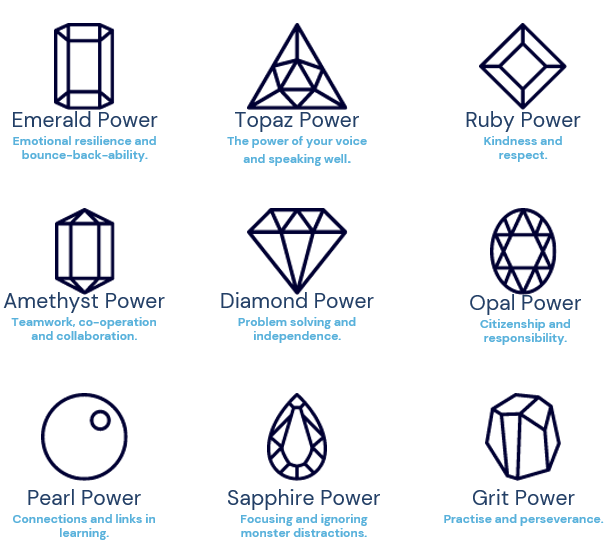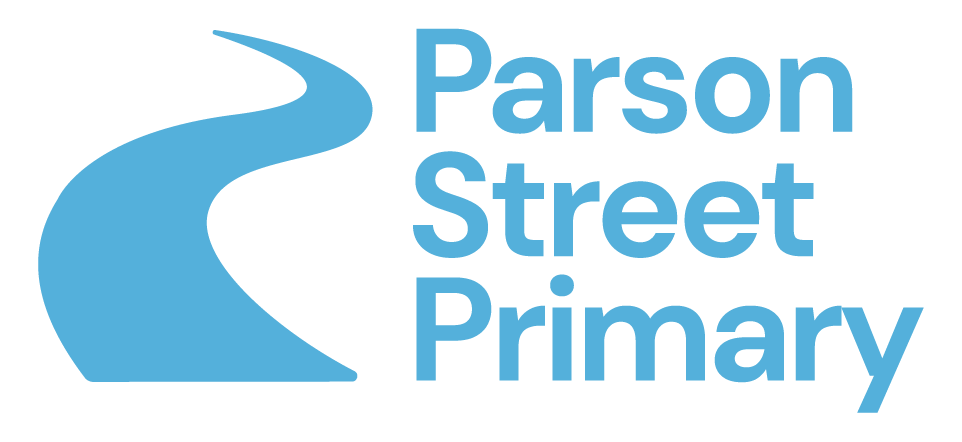The Gem Project is a metacognitive approach to teaching and learning. It encourages and enables children to reflect on themselves as learners and explicitly identify and practise the skills needed in order to be successful. “Gem Powers” are used in every classroom and help the children understand which skills they need to carry out different learning tasks successfully. The children become aware of themselves as learners and we teach the children to get better at the skills they need to develop. The children learn to identify how to use the different powers and which ones are needed for different tasks.
The Gem Project was created by Tom Robson (scientist and educationalist – www.tredu.co.uk) who believes that with all skills, ‘practise makes permanent’. Children’s ability to reflect on themselves as learners (metacognition) is now recognised as critical to children becoming resilient and successful learners. This project allows the children to do just that!
How we use Gem Powers at Parson Street
By having a framework to describe successful learning, we are able to talk with children about specific aptitudes that lead to high quality learning in the classroom. In our school, children earn gems through displaying and developing different behaviours for learning. These gems are collected in a class pot where children can see their group effort towards successful learning. Teachers regularly reflect on the types of behaviours shown and identify any areas for improvement. When the class pots are full, teachers celebrate with their classes as a team effort towards shared success. Every week, teachers reflect with their classes on the powers they are particularly proud of developing throughout the week and decide on a specific learning focus for the following week.

How you can use the gem powers at home
These are just a few examples of how you might use the gem powers at home:
- Diamond Power at home: Children picking something up rather than stepping over it, cutting up their own dinner, or tidying their bedroom without being asked.
- Sapphire power at home: Focusing and finishing one task at a time. For example, homework or tidying up.
- Emerald power at home: When children are told they can’t do something or can’t have something or being asked to do something they don’t enjoy, they are able to control the ‘it’s not fair’ response.
- Ruby Power at home: Supporting siblings in a game, getting dressed or reading. Random acts of kindness and understanding how others might feel in different situations.
- Topaz power at home: Children voicing their opinions on subjects. Children being able to ask questions about others and show interest in their answers.
- Pearl power at home: Children talking about their learning or being able to link concepts at home with those learnt in school.
- Amethyst power at home: Taking it in turns to share, working together to solve a problem or help others
- Grit power at home: Children practising skills even when it is hard. Children being determined to make improvements and sticking to hobbies such as reading , sports clubs, musical instruments etc.

